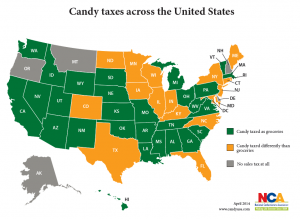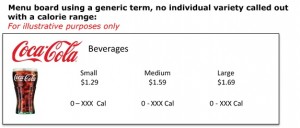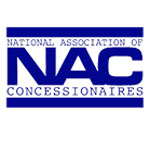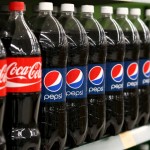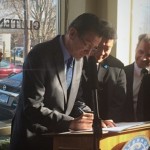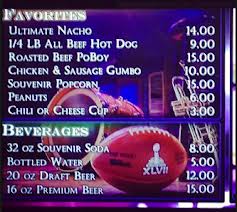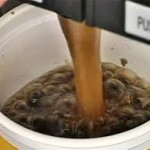Government Relations Update: NAC Joins Coalition Opposed to D.C. Beverage Excise Tax
 The National Association of Concessionaires (NAC) has joined The Alliance for an Affordable D.C. along with District of Columbia (D.C.) business, community and trade associations, both local and national, to oppose a proposed 1.5 cent-per-ounce tax on beverages in the District.
The National Association of Concessionaires (NAC) has joined The Alliance for an Affordable D.C. along with District of Columbia (D.C.) business, community and trade associations, both local and national, to oppose a proposed 1.5 cent-per-ounce tax on beverages in the District.
The measure imposes an excise tax of 1.5 cent-per-ounce on the distribution of beverages containing sugar or other natural caloric sweeteners in the District, including, lemonade, sports drinks, soft drinks, iced teas, juice drinks, coconut water and energy drinks. The tax would apply to all ready to drink beverages (bottles, cans, cartons) and beverages made from syrups and concentrates (also known as fountain drinks), based on the total beverage made from the concentrates.
It applies to any beverage for human consumption containing a “natural common sweetener” (i.e. granulated white sugar, brown sugar, sucrose, fructose, glucose and other sugars including honey, molasses, maple sap, agave nectar…).
Exempt are beverages in which milk is the primary ingredient (including coffee drinks, like lattes and cappuccinos), beverages for medical use, infant formula, 100 percent juice and unsweetened drinks to which purchasers or sellers can add natural common sweeteners at the point of sale.
This tax would replace a sales tax on beverages currently at a rate of 8 percent. The bill would repeal the sales tax on beverages and replace it with the 1.5 cent per ounce excise tax. It does not repeal the 10 percent sales tax on customers on beverages at restaurants.
How this excise tax impacts prices:
• A 19-ounce container of lemonade mix would jump from $4.99 to $8.83 – a 77 percent increase.
• A gallon jug of iced tea would jump from $2.50 to $4.42 – a price hike of 76 percent.
• A family-size 2-liter of soda would jump from $2.19 to $3.20 – a price hike of 46 percent.
• An 8-pack of 20 oz. sports drinks would jump from $6.99 to $9.39 – a price hike of 34 percent.
• A 12 pack of 12-ounce cans of lemonade would jump from $6.99 to $9.15 – a 31 percent increase.
• A typical 12-pack of soda cans would jump from $6.99 to $9.15 – a price hike of 30 percent.
• A 3-gallon bag in a box would increase by $28.80.
• A 5-gallon bag in a box would increase by $48.99.
• The excise tax on a 3-gallon bag of syrup concentrate for fountain beverages would cost a restaurant owner an additional $28.80 per bag – and that’s on top of the base product cost and the existing 10 percent sales tax.
• For a 5-gallon bag of concentrate, the excise tax would cost a restaurant owner an additional $48.00 per bag.
• Restaurant customers already pay a 10 percent sales tax on beverages. While the burden of paying this 1.5 cent per ounce tax will fall on the distributor, restaurants will be forced to increase prices to offset costs. In the end, customers will absorb the 1.5 cent per ounce excise tax and pay the existing 10 percent sales tax.
Who it impacts:
• Working families who are already struggling to make ends meet in a city where the cost of living is among the highest in the nation.
• Local businesses will be hit hard by the tax, costing sales and putting jobs at risk.
Other observations:
• A 1 cent tax per ounce of beverage would add an average of 18 percent to the retail price of the products affected. The impacts would be substantially larger for lower-price items like 2-liter bottles; a 2-liter bottle of iced tea that might retail for $1.09 would carry a 68 cent tax.
• On October 1, Washington, D.C. just enacted a beverage tax by increasing the sales tax from 6 to 8 percent. The bill would repeal the sales tax on these beverages and replace it with the 1.5 cent per ounce excise tax. Consumers are more likely to react to shelf prices, however, so the impact of the excise tax would likely be fully visible to consumers.
• Retail sales would be expected to drop $47 million per year, but with cross-border shopping, the decline could be much higher.
NAC members, concerned consumers, businesses and trade groups in D.C. are encouraged to contact their council member.
___________________________________________________________________________________________________________________________________________________
Ground Shifts Under California Employers As Governor Signs Flurry Of Significant Legislation
November 6, 2019
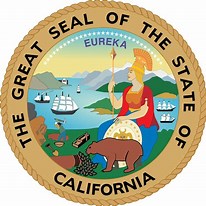 First-year Governor Gavin Newsom signed some significant pieces of legislation in recent days that will impact employers across California – ranging from a ban on mandatory arbitration agreements, to a complete rewrite to the rules for the use of independent contractors, to a general prohibition on “no-rehire” clauses in settlement agreements with most of these laws going into effect on January 1, 2020. Many thanks to NAC Member Fisher Phillips for this update. CLICK HERE TO READ ENTIRE STORY
First-year Governor Gavin Newsom signed some significant pieces of legislation in recent days that will impact employers across California – ranging from a ban on mandatory arbitration agreements, to a complete rewrite to the rules for the use of independent contractors, to a general prohibition on “no-rehire” clauses in settlement agreements with most of these laws going into effect on January 1, 2020. Many thanks to NAC Member Fisher Phillips for this update. CLICK HERE TO READ ENTIRE STORY
Source: Fisher Phillips
_______________________________________________________________________________________________________________________________________________
U.S. Department of Labor Releases Overtime Rule for 2020
September 24, 2019
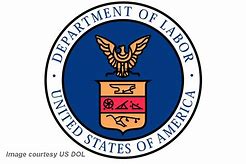 The suspense is over – the Department of Labor just this morning announced the revised Overtime Rule, which will set the minimum salary threshold for the Fair Labor Standard Act’s white-collar exemptions at $684 per week, or $35,568 per year. The rule, which will expand overtime pay obligations to an estimated 1.3 million additional workers, will take effect on January 1, 2020. CLICK HERE TO READ ENTIRE STORY
The suspense is over – the Department of Labor just this morning announced the revised Overtime Rule, which will set the minimum salary threshold for the Fair Labor Standard Act’s white-collar exemptions at $684 per week, or $35,568 per year. The rule, which will expand overtime pay obligations to an estimated 1.3 million additional workers, will take effect on January 1, 2020. CLICK HERE TO READ ENTIRE STORY
Source: Fisher Phillips
_______________________________________________________________________________________________________________________________________________
FDA’s Implementation of Menu Labeling Moving Forward
August 16, 2019
 The U.S. Food and Drug Administration issued a fact sheet to inform stakeholders about the agency’s continued efforts to implement menu labeling in chain restaurants and similar retail food establishments. FDA will continue to support industry to implement the menu labeling requirements, assess implementation progress to further inform education and outreach as well as engage with state, local, tribal and territorial regulatory partners to ensure consistent implementation of the menu labeling requirements. CLICK HERE TO READ ENTIRE STORY
The U.S. Food and Drug Administration issued a fact sheet to inform stakeholders about the agency’s continued efforts to implement menu labeling in chain restaurants and similar retail food establishments. FDA will continue to support industry to implement the menu labeling requirements, assess implementation progress to further inform education and outreach as well as engage with state, local, tribal and territorial regulatory partners to ensure consistent implementation of the menu labeling requirements. CLICK HERE TO READ ENTIRE STORY
Source: U.S. Food & Drug Administration
_________________________________________________________________________________________________________________________________________________
The Bottom Line – Soda Taxes Don’t Work
April 17, 2019
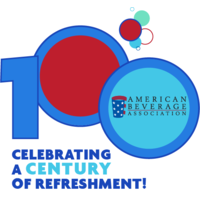 Beverage taxes are unpopular because they raise prices dramatically on common grocery items, with the largest share of the tax burden falling on families least capable of paying it. Not only do they disproportionately hurt working families and small businesses, they simply do not make anyone healthier. In a recent Washington Examiner opinion piece, author Guy Bentley hits the nail on the head.
Beverage taxes are unpopular because they raise prices dramatically on common grocery items, with the largest share of the tax burden falling on families least capable of paying it. Not only do they disproportionately hurt working families and small businesses, they simply do not make anyone healthier. In a recent Washington Examiner opinion piece, author Guy Bentley hits the nail on the head.
“The bottom line is that soda taxes don’t work by the very measures their proponents set for them,” said Bentley, who is a contributor to the Washington Examiner’s Beltway Confidential blog. CLICK HERE TO READ ENTIRE STORY
Source: The American Beverage Association
______________________________________________________________________________________________________________________________________________
USDA Now Accepting Comments for 2020 – 2025 Dietary Guidelines
March 15, 2019
 (3/15) The U.S. Department of Agriculture and the U.S. Department for Health and Human Services on March 12 began accepting public comments on the 2020 Dietary Guidelines for Americans.
(3/15) The U.S. Department of Agriculture and the U.S. Department for Health and Human Services on March 12 began accepting public comments on the 2020 Dietary Guidelines for Americans.
Comments may be submitted on the www.regulations.gov web site or mailed to Kristin Koegel, U.S.D.A. Food and Nutrition Service, Center for Nutrition Policy and Promotion, 3101 Park Center Drive, Room 1034, Alexandria VA 22302. All submissions must include the agency name and Docket FNS-2019-0001. CLICK HERE TO READ ENTIRE STORY
Source: The U.S. Department of Agriculture and the U.S. Department for Health and Human Services
______________________________________________________________________________________________________________________________________________
Federal Appeals Court Blocks San Francisco Law On Ad Warnings For Sugary Drinks
February 1, 2019
A federal appeals panel has blocked a San Francisco law requiring the beverage industry to post health warnings on advertisements for soda and other sugar-sweetened drinks. In a unanimous ruling, the 9th U.S. Circuit Court of Appeals ruled that the law, approved by San Francisco voters in June 2015, is an unconstitutional infringement on commercial speech. The ruling by an 11-member, or en banc, panel of the appellate court is a major victory for the beverage industry, retail groups and advertisers who had opposed the local ordinance. CLICK HERE TO READ ENTIRE STORY
Source: NPR
_______________________________________________________________________________________________________________________________________________
Government Releases Rules for Genetically Modified Foods
December 9, 2018
 U.S. consumers will see labels on food products that contain genetically modified ingredients as early as 2020, federal officials said Thursday. The USDA on Thursday released the first national disclosure requirements for foods that have been altered in a way that doesn’t occur naturally. The fight over whether or not to label foods with genetically modified ingredients, also called genetically engineered foods and GMOs, has raged for years. Advocates say consumers should know how their food is made, and opponents worry consumers will interpret labels on bioengineered foods as a warning on foods many agree are safe. CLICK HERE TO READ ENTIRE STORY
U.S. consumers will see labels on food products that contain genetically modified ingredients as early as 2020, federal officials said Thursday. The USDA on Thursday released the first national disclosure requirements for foods that have been altered in a way that doesn’t occur naturally. The fight over whether or not to label foods with genetically modified ingredients, also called genetically engineered foods and GMOs, has raged for years. Advocates say consumers should know how their food is made, and opponents worry consumers will interpret labels on bioengineered foods as a warning on foods many agree are safe. CLICK HERE TO READ ENTIRE STORY
Source: CNBC
_______________________________________________________________________________________________________________________________________________
New FDA Online Education and Training Module on Menu Labeling
December 3, 2018
 The FDA has developed an education module to help industry, regulators, and consumers understand the menu labeling regulations. This online module describes what types of establishments and types of foods are covered by the menu labeling regulations and how to comply with the regulations. The FDA has also published two fact sheets for industry on menu labeling and declaring calories.
The FDA has developed an education module to help industry, regulators, and consumers understand the menu labeling regulations. This online module describes what types of establishments and types of foods are covered by the menu labeling regulations and how to comply with the regulations. The FDA has also published two fact sheets for industry on menu labeling and declaring calories.
May 7, 2018, was the compliance date for the menu labeling regulations. During the first year of implementation, the FDA is focusing on education and outreach and working cooperatively with establishments to help them comply with the menu labeling regulations.
CLICK HERE TO READ ENTIRE STORY
_________________________________________________________________________________________________________________________________________________
California Lawmakers Ban Soda Taxes For 12 Years
July 2, 2018
 California’s cities and counties will be barred from adopting soda taxes for the next 12 years under a legislative deal that marks a big victory for the influential beverage industry — one that state lawmakers said holds Californians “hostage.”
California’s cities and counties will be barred from adopting soda taxes for the next 12 years under a legislative deal that marks a big victory for the influential beverage industry — one that state lawmakers said holds Californians “hostage.”
On Thursday, the state legislature rushed to approve the last-minute, quid pro quo deal between one of the state’s largest labor unions and the American Beverage Association. Democratic Gov. Jerry Brown signed the measure shortly after the vote.
The bill gives the industry a reprieve in California from any future local soda taxes until Jan. 1, 2031. In return, cities and counties will avoid a costly fight at the ballot box on a broader proposal that could have made it more difficult for them to raise general taxes and fees. CLICK HERE TO READ ENTIRE STORY.
Source: Kaiser Health News
_________________________________________________________________________________________________________________________________________________
Louisiana State Bill Would Prohibit Certifications & Accreditations
May 7, 2018
 Louisiana House Bill 748, the “Occupational Licensing Review Act,” would prohibit use of the terms “certification” and “registration” for nongovernmental professional credentialing unless state law requires certification or registration to work in the profession (as in the medical field, for example).
Louisiana House Bill 748, the “Occupational Licensing Review Act,” would prohibit use of the terms “certification” and “registration” for nongovernmental professional credentialing unless state law requires certification or registration to work in the profession (as in the medical field, for example).
Though the bill is unlikely to advance this term, this is the first proposal that would limit use of Certifications & Accreditations (i.e.: CCM, ECM. ACS) unless mandated by the state. We encourage Louisiana members to act now and let your state officials aware of your feelings on this proposal as soon as possible. Your hard-earned and well-deserved Credentials are at stake.
https://www.thepowerofa.org/2018/04/la-bill-poses-threat-to-credentialing-programs/
Source: NAC – May 7, 2018
_________________________________________________________________________________________________________________________________________________
FDA Menu Labeling Compliance Starts Monday, May 7
May 4, 2018
 Barring any additional postponements from Congress or the Trump Administration, the FDA Compliance Date for the Menu Labeling Requirements take effect on Monday, May, 7, 2018. This mandatory rule applies to restaurants and similar retail food establishments if they are part of a chain of 20 or more locations, doing business under the same name, offering for sale substantially the same menu items and offering for sale restaurant-type foods.
Barring any additional postponements from Congress or the Trump Administration, the FDA Compliance Date for the Menu Labeling Requirements take effect on Monday, May, 7, 2018. This mandatory rule applies to restaurants and similar retail food establishments if they are part of a chain of 20 or more locations, doing business under the same name, offering for sale substantially the same menu items and offering for sale restaurant-type foods.
Many eating establishments (fast food, casual, movie theatres and sports venues) are already in compliance and you probably have already seen nutritional information on menus and menu boards for months, if not years.
Source: NAC – May 4, 2018
___________________________________________________________________________________________________________________________________________________
Drink taxes damage the economy and do nothing to cut sugar intake
January 31, 2018
 The start of the new year means new resolutions for millions of Americans. These include resolutions to lose weight, eat better, exercise more, and save money. In Philadelphia, local leaders set their own goals last January to curb obesity and raise revenue through a new tax on non-alcoholic beverages. But like so many New Year’s resolutions, the Philadelphia beverage tax fell short of the promises local officials made to consumers.
The start of the new year means new resolutions for millions of Americans. These include resolutions to lose weight, eat better, exercise more, and save money. In Philadelphia, local leaders set their own goals last January to curb obesity and raise revenue through a new tax on non-alcoholic beverages. But like so many New Year’s resolutions, the Philadelphia beverage tax fell short of the promises local officials made to consumers.
According to a new study by Oxford Economics, the Philadelphia beverage tax pushed consumers to shop outside of the city and beyond the reach of the tax, hurting job creation and the local economy inside the city limits. This study, conducted in partnership with the American Beverage Association, reviewed proprietary data from Philadelphia bottlers and same-store supermarket retailers to determine the real impact of the beverage tax for local consumers. CLICK HERE TO READ ENTIRE STORY
Source: The Hill – January 31, 2018
_________________________________________________________________________________________________________________________________________________
Renewed California Sales Tax Efforts
January 1, 2018
 Sales tax on candy and sweetened beverages are going to be addressed again in California. A committee hearing on amended bill AB-274 will take place on January 8, 2018. The amended bill will seek to eliminate exemption of tax on said products. Here is some text from the bill:
Sales tax on candy and sweetened beverages are going to be addressed again in California. A committee hearing on amended bill AB-274 will take place on January 8, 2018. The amended bill will seek to eliminate exemption of tax on said products. Here is some text from the bill:
Assembly Constitutional Amendment 2 of the 2017–18 Regular Session, if approved by the voters, on and after a specified date, would instead require that any sales or use taxes levied by the state or any of its political subdivisions apply to the sale of, or the storage, use, or other consumption in this state of, certain food products for human consumption, which include candy, confectionery, and snack foods. Assembly Constitutional Amendment 2, if approved by the voters, would authorize the Legislature to exempt the sale of, or the storage, use, or other consumption in this state of, any food product from sales and use taxes by a statute that becomes operative on or after November 7, 2018.
CLICK HERE TO READ THE ENTIRE BILL
______________________________________________________________________________________________________________________________________
FDA Issues Menu Labeling Guidance Supplement
November 7, 2017
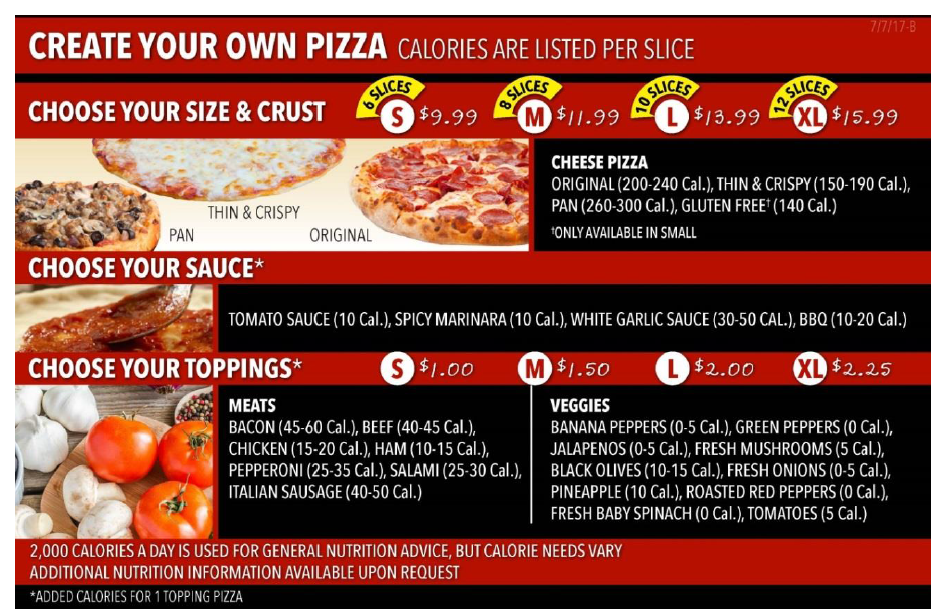 The U.S. Food and Drug Administration today released the draft guidance Menu Labeling: Supplemental Guidance for Industry. It addresses comments the agency received on the May 2017 interim final rule (IFR) extending the compliance date for the Menu Labeling Final Rule from May 5, 2017, to May 7, 2018. The FDA has been working hard to address industry and other concerns through the least burdensome route and believe that is through guidance.
The U.S. Food and Drug Administration today released the draft guidance Menu Labeling: Supplemental Guidance for Industry. It addresses comments the agency received on the May 2017 interim final rule (IFR) extending the compliance date for the Menu Labeling Final Rule from May 5, 2017, to May 7, 2018. The FDA has been working hard to address industry and other concerns through the least burdensome route and believe that is through guidance.
Please find attached a Power Point Deck used for the call.
The question-and-answer style draft guidance features approximately 20 different graphics to illustrate the agency’s new and expanded interpretations of the menu labeling provisions and practical ways for industry to comply with these provisions. It addresses concerns some stakeholders have raised including: calorie disclosure for self-service foods, such as buffets and grab-and-go foods; accounting for the natural variation of foods; compliance and enforcement of the rule; criteria for covered establishments; determining standard menu items; criteria for distinguishing between menus and other information presented to the consumer, like marketing materials; various methods for providing calorie disclosure information on foods such as pizza.
For example, the sample graphic above (Figure 16 in the draft guidance) illustrates how a pizza chain can structure a build-your-own pizza menu board. This graphic demonstrates a flexible solution to address industry’s concern about how to provide calorie counts for the complex permutations of a build-your-own pizza order.
The Menu Labeling Final Rule, when applied to marketing materials, is intended to be flexible and not prescriptive. As an example, the draft guidance explains that marketing materials (e.g., pizza coupons, posters in store windows, signs on gas pumps, or paper inserts) generally would not be considered a menu or menu board and would not require calorie declarations. The agency is withdrawing two questions from the previous Menu Labeling Guidance that pertained to marketing materials. When finalized, this guidance will provide clarity on the FDA’s flexible approach to distinguishing between a menu/menu board and marketing materials.
The agency will accept comments on this draft guidance from November 9, 2017 to January 8, 2018, after which it will move to finalize it to ensure industry has adequate time to implement the requirements. Consumers can expect to see menu labeling in covered establishments nationwide by May 7, 2018. We are fully committed to keeping this deadline.
Submit electronic comments to http://www.regulations.gov. Submit written comments to the Dockets Management Staff (HFA-305), Food and Drug Administration, 5630 Fishers Lane, rm. 1061, Rockville, MD 20852. All comments should be identified with Docket No. FDA-2011-F-0172 for “Menu Labeling: Supplemental Guidance for Industry.”
For Additional Information:
Federal Register Notice – Menu Labeling: Supplemental Guidance for Industry
Menu Labeling: Supplemental Guidance for Industry
Statement from FDA Commissioner Scott Gottlieb, M.D., on a practical approach to ensuring timely implementation of FDA’s menu labeling rule
FDA Issues Menu Labeling Guidance, Utilizing Q&A Format and Graphics to Address Concerns, Offer Solutions, and Provide Flexibility
Guidance for Industry: A Labeling Guide for Restaurants and Retail Establishments Selling Away-From-Home Foods – Part II (April 2016 Menu Labeling Guidance)
Food Labeling; Nutrition Labeling of Standard Menu Items in Restaurants and Similar Retail Food Establishments; Extension of Compliance Date and Request for Comments
Food Labeling; Nutrition Labeling of Standard Menu Items in Restaurants and Similar Retail Food Establishments; Final Rule
____________________________________________________________________________________________________________________________________________________
Cook County Finance Committee Votes Down Soda Tax
October 11, 2017
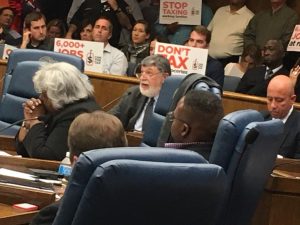 In a near-unanimous vote, the Cook County Finance Committee has approved a plan to repeal the controversial sweetened beverage tax, effective Dec. 1, setting up a final showdown on Wednesday.
In a near-unanimous vote, the Cook County Finance Committee has approved a plan to repeal the controversial sweetened beverage tax, effective Dec. 1, setting up a final showdown on Wednesday.
Cook County Commissioner Larry Suffredin was the only member of the Cook County Board to vote against the proposal to eliminate the penny-per-ounce tax on soft drinks and other sugary beverages, after three more commissioners who originally voted for it defected on Tuesday.
A final vote on repealing the tax would come at Wednesday’s meeting of the full board, but unless any board members change their mind again by then, the tax is all but certain to go away. CLICK HERE TO READ ENTIRE STORY
Source: CBS Chicago
__________________________________________________________________________________________________________________________________________________
Commissioner Daley Reveals He’s Switching Vote on Soda Tax
October 5, 2017
 Cook County Commissioner John Daley, the Chairman of the Finance Committee for the county, has informed Board President Toni Preckwinkle that he will vote for the repeal of the controversial sweetened beverage tax. Daley, who was one of eight commissioners that helped pass the measure earlier this year, says that his constituents resoundingly came out against the tax, and that he must honor their wishes as he represents them on the board.
Cook County Commissioner John Daley, the Chairman of the Finance Committee for the county, has informed Board President Toni Preckwinkle that he will vote for the repeal of the controversial sweetened beverage tax. Daley, who was one of eight commissioners that helped pass the measure earlier this year, says that his constituents resoundingly came out against the tax, and that he must honor their wishes as he represents them on the board.
“I’ve never had so many reach out to me before,” he said. “I have heard overwhelmingly from my district that they are opposed to this tax.” The vote to repeal the measure is scheduled for next week, and Daley’s reversal of position could spell the end of the tax that has ginned up controversy since it went into effect this summer.
CLICK HERE TO READ ENTIRE STORY
Source: NBC Chicago
____________________________________________________________________________________________________________________________________________________
U.S. Appeals Court blocks San Francisco ordinance on soda health warnings
September 20, 2017
 A U.S. Appeals court sided with the beverage industry on Tuesday, granting its request to block a San Francisco ordinance mandating health warnings for soda and other sugary drinks.
A U.S. Appeals court sided with the beverage industry on Tuesday, granting its request to block a San Francisco ordinance mandating health warnings for soda and other sugary drinks.
The 9th U.S. Circuit Court of Appeals ruled that San Francisco’s ordinance unfairly targeted one group of products. The plaintiffs, including the American Beverage Association and the California Retailers Association, were likely to succeed with their claim that the ordinance was unjustified and violated commercial speech under the First Amendment, the court ruled.
CLICK HERE TO READ ENTIRE STORY
Source: Reuters
____________________________________________________________________________________________________________________________________________________
Independent Economic Analysis Uncovers the Heavy Cost of the Menu Labeling Rule Delay for Consumers and Industry
September 5, 2017
 Losses for consumers outweigh industry gains by a factor of 15-to-1.
Losses for consumers outweigh industry gains by a factor of 15-to-1.
A new independent economic analysis has found that the Food and Drug Administration’s (FDA) decision to delay the national menu labeling law for one year (from May 5, 2017 to May 7, 2018) could end up costing consumers an astounding $15 for every $1 saved by industry. Delaying implementation of the law increases costs through increased health care costs and loss of productivity.
The study was funded by the Center for Science in the Public Interest and the Consumer Federation of America, and prepared by Dr. Mark Cooper, who holds a Ph.D. from Yale University. The finding is in stark contrast with the FDA’s benefit-cost analysis, which already conceded the cost to consumers was greater than any savings to industry by 2-to-1 ($2 cost to consumers for every $1 saved by food establishments that have not yet added nutrition data to their menus). Calorie labeling, already in place by many restaurant chains, allows consumers to make informed decisions when eating out, which can lead to lower-calorie choices and options.
“This economic analysis once again proves the importance of menu labeling, which the public has been waiting for over seven years since the law passed in 2010,” said Colin Schwartz, Senior Nutrition Policy Associate of CSPI. “The FDA’s delay of the law comes with a steep price tag for consumers.”
The study finds that changing the requirements could cost food service establishments additional hundreds of millions of dollars. Further, the vast majority of food service establishments have already incurred the initial costs of compliance. As a result, delaying the law is unlikely to result in any cost savings for them.
“Because of the last-minute delay of the rule and the uncertainty introduced by the Trump Administration, many food service establishments, including the nation’s top 50 restaurant chains, have already made large investments to abide by the law and give their customers what they want,” said Schwartz. “Now they are faced with uncertainty at the prospect of changes that would cost them additional hundreds of millions of dollars to redo their menus, retrain staff and conduct legal reviews.”
“While this delay was misguided, we are heartened that FDA Commissioner Scott Gottlieb, M.D. agrees that consumers have access to calorie information when eating out, and decided not to further delay the law past May 2018. We will remain vigilant that the FDA’s final guidance on menu labeling later this year ensures that the consumer-choice spirit of the law remains intact.”
Source: The Center for Science in the Public Interest is a nonprofit health-advocacy group based in Washington, DC that focuses on nutrition and food safety. CSPI is supported largely by the subscribers to its Nutrition Action Healthletter and by foundation grants.
__________________________________________________________________________________________________________________________________________________
FDA Extends Menu Labeling Compliance Date to 2018
May 3, 2017

The U.S. Food and Drug Administration is extending the compliance date for menu labeling requirements from May 5, 2017 to May 7, 2018. This extension allows for further consideration of what opportunities there may be to reduce costs and enhance the flexibility of these requirements beyond those reflected in the interim final rule.
The FDA is inviting comments for 60 days on the implementation of the menu labeling requirements, such as approaches to reduce regulatory burden or increase flexibility related to (a) calorie disclosure signage for self-service foods, including buffets and grab-and-go foods; (b) methods for providing calorie disclosure information other than on the menu itself; and (c) criteria for distinguishing between menus and other information presented to the consumer.
The extension will be effective on May 4, 2017 when the Federal Register publishes the extension in advance of the May 5 compliance date. The 60-day comment period will begin on May 4, 2017. CLICK HERE TO READ ENTIRE STORY
Source: FDA
________________________________________________________________________________________________________________________________________________
NLRB Acts On “Clean Uniform” Policy
April 26, 2017
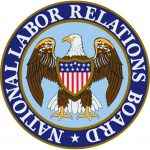 The National Labor Relations Board recently ruled that In-N-Out Burger’s uniform policy, which forbids employees from wearing buttons, pins, or stickers on their uniforms, violated Section 8(a)(1) of the National Labor Relations Act. Although the popular burger chain argued “special circumstances” justified the policy – namely that it wanted to create the public image of a “sparkling clean” restaurant – the Board rejected that line of reasoning in its March 21, 2017 ruling.
The National Labor Relations Board recently ruled that In-N-Out Burger’s uniform policy, which forbids employees from wearing buttons, pins, or stickers on their uniforms, violated Section 8(a)(1) of the National Labor Relations Act. Although the popular burger chain argued “special circumstances” justified the policy – namely that it wanted to create the public image of a “sparkling clean” restaurant – the Board rejected that line of reasoning in its March 21, 2017 ruling.
What the NRLB action means to employers: There are two main lessons you can learn from this decision. First, most private employers are covered by the NLRA, even those that are not unionized. Therefore, the uniform policy standards established by the Board likely apply to your workplace. Second, the burden of establishing special circumstances always rests on the employer. CLICK HERE TO READ ENTIRE STORY
Source: Fisher & Phillips LLP
_____________________________________________________________________________________________________________________________________________
Enforcement Looms of FDA’s Menu Labeling Regulations
April 25, 2017
 Expensive calorie count mandate set to begin on May 5. Is delay or repeal possible?
Expensive calorie count mandate set to begin on May 5. Is delay or repeal possible?
FDA enforcement of its absurd rules governing mandatory calorie menu labeling, passed in 2010 as part of Obamacare, is set to begin on May 5, after years of delays.
In 2015, the FDA delayed implementing the rules until December 2016, after the presidential election. At the time, The Hill speculated that a new “Republican president could choose to scrap the rule altogether.”
That hasn’t happened. Yet. But in December 2016 the FDA delayed enforcing the rules until May 5, 2017, which is the deadline that now looms. CLICK HERE TO READ ENTIRE STORY
Source: reasons.com
____________________________________________________________________________________________________________________________________________________
The Workplace Implications Of President Trump’s Latest Immigration Executive Order
January 20, 2017
 Late Friday afternoon, President Trump signed a controversial executive order focusing on immigration issues. The executive order, titled “Protecting the Nation from Terrorist Entry into the United States by Foreign Nationals” and signed on January 27, 2017, created an immediate freeze on all entry for individuals from Syria, Iran, Libya, Somalia, Yemen, Iraq, and Sudan. Both immigrant and non-immigrant visa holders were impacted by the executive order.
Late Friday afternoon, President Trump signed a controversial executive order focusing on immigration issues. The executive order, titled “Protecting the Nation from Terrorist Entry into the United States by Foreign Nationals” and signed on January 27, 2017, created an immediate freeze on all entry for individuals from Syria, Iran, Libya, Somalia, Yemen, Iraq, and Sudan. Both immigrant and non-immigrant visa holders were impacted by the executive order.
What Does The Executive Order Say?
Citizens from the seven listed countries already faced heightened scrutiny when obtaining visas, gaining refugee status, or immigrating to the United States. This executive order establishes a total suspension of entry from all immigrant and nonimmigrants from the listed countries for at least 90 days. The executive order also halts all refugee admission processing for at least 120 days and halts the entry of Syrian refugees for the foreseeable future. This entry suspension will impact current visa holders returning from travel abroad, as well as U.S. permanent residents who are currently outside of the United States.
Recent updates from White House Chief of Staff Reince Preibus indicate that the White House may be changing course about whether the order bans entry for U.S. Permanent Residents. As of the time of publication, the White House has not made any official changes to the executive order, but the Department of Homeland Security has stated that “the entry of lawful permanent residents is in the national interest. Accordingly, absent significant derogatory information indicating a serious threat to public safety and welfare, lawful permanent resident status will be a dispositive factor in our case-by-case determinations.” Despite this statement, it appears that federal immigration officials will subject such individuals to further screening if they have traveled to one of the banned countries. CLICK HERE TO READ ENTIRE STORY
Source: Fisher & Phillips LLP
__________________________________________________________________________________________________________________________________________________
California Assemblywoman introduces measure to restore “Snack Tax”
January 20, 2017
 California Assemblywoman Cristina Garcia (D-Bell Gardens) introduced a measure that would roll would back the sales tax exemption on high sugar, high fat, processed, snack foods, if approved by voters.
California Assemblywoman Cristina Garcia (D-Bell Gardens) introduced a measure that would roll would back the sales tax exemption on high sugar, high fat, processed, snack foods, if approved by voters.
ACA 2 would amend the California State Constitution, which requires 2/3 vote of each house of the Legislature to approve, as well as voter approval via referendum. ACA 2 states that any sales and use taxes also apply to snack foods and candy. AB XX, which will be introduced later, will define snack foods and candy for the purposes of the ACA’s provisions.
The funds would generate almost $1 billion per year and could be used to fund essential services. Assemblymember Garcia began laying the groundwork for a snack tax in the previous legislative session, during conversations around exempting menstrual products from state sales tax.
“As I took a closer look at our tax code, it became apparent that while California’s policy is to tax luxury items, the reality is that it’s inconsistent. We tax necessities like tampons but exempt chocolate bars” stated Garcia.
In 1992 voters passed Proposition 163, a constitutional amendment that repealed the “snack tax” implemented by the Legislature to deal with a $14.3 billion budget deficit facing California. Due to that referendum, the California constitution contains a permanent ban on taxing most candy, chips and snacks. Only a vote by the public can repeal that action.
Added the Assemblywoman, “It’s been 24 years and attitudes have changed. No longer do we consider these food items as essential to our diets. We’ve seen the results of the explosion of snack food consumption on our society and the negative health repercussions. ACA 2 would put before voters, the question of whether or not snacks are essential or a luxury that should continue to be exempt from sales tax”.
According a UCLA Center for Health Policy Research study on Pre-diabetes, more than half of adults in California are pre-diabetic or have diabetes. Rates are higher among adults of color and low income populations. The cities of Southeast Los Angeles, a region comprised of disadvantaged communities, makes up 50% of the top ten most overweight cities in California. The cities the Assemblywoman represents are located in the same region.
“I think that Californians can see the inequity of a system that taxes over-the-counter medicines, such as aspirin, cough & cold medicines, medicated gum and yes, tampons, while allowing candy bars, chips & snack cakes to avoid taxation”, concluded Garcia.
_________________________________________________________________________________________________________________________________________________
Minimum Wage Increases In Store For Many In 2017
December 20, 2016
 While the federal minimum wage has remained steady at $7.25 for the past seven years, many state and local jurisdictions have set their own minimum rates higher than the federal level. And, of course, when a local jurisdiction mandates a rate higher than the federal rate, you must pay your employees the higher rate.
While the federal minimum wage has remained steady at $7.25 for the past seven years, many state and local jurisdictions have set their own minimum rates higher than the federal level. And, of course, when a local jurisdiction mandates a rate higher than the federal rate, you must pay your employees the higher rate.
NAC Member Fisher Phillips has provided this listing of all the planned increases currently on tap for 2017. If your state or local jurisdiction is not listed, there is presently no increase in store for you in the new year. Obviously, though, these laws may change at any time, and you should consult with your local employment counsel before acting upon the information contained in this summary.
CLICK HERE TO READ ENTIRE STORY
Source: Fisher & Phillips LLP
______________________________________________________________________________________________________________________________________________
Last Minute Ruling on Overtime Rules
November 23, 2016
 In a dramatic last-minute development, a federal judge in Texas today blocked the U.S. Department of Labor’s (USDOL’s) overtime rule from taking effect on December 1, handing an eleventh-hour victory to employers across the country. Agreeing with arguments posed by concerned states and business groups, the judge issued a preliminary injunction preventing the rules from being implemented on a nationwide basis.
In a dramatic last-minute development, a federal judge in Texas today blocked the U.S. Department of Labor’s (USDOL’s) overtime rule from taking effect on December 1, handing an eleventh-hour victory to employers across the country. Agreeing with arguments posed by concerned states and business groups, the judge issued a preliminary injunction preventing the rules from being implemented on a nationwide basis.
The fate of the overtime rules is now uncertain. The Trump administration will take over the USDOL in less than two months’ time, and the incoming administration has repeatedly indicated that it wants to eliminate unnecessary regulations hampering the business community. Unless an appeals court reverses course in the next several weeks and breathes new life into the rules, it is quite possible that the rules will be further delayed, completely overhauled, or altogether scrapped once President Trump takes office.
CLICK HERE TO READ ENTIRE STORY
Source: Fisher & Phillips LLP
______________________________________________________________________________________________________________________________________________
FDA Announces Menu Labeling Workshops
June 23, 2016

The U.S. Food and Drug Administration (FDA) is announcing a series of public workshops about menu labeling to help industry comply with requirements to provide calorie and other nutrition information to consumers. The workshops will address the menu labeling final rule – Nutrition Labeling of Standard Menu Items in Restaurants and Similar Retail Food Establishments.
Upcoming Workshops
College Park, Maryland
July 7-8, 2016 – 8 am to 4:30 pm
St. Louis, Missouri
September 27-28, 2016 – 8 am to 4:30 pm
Oakland, California
A third meeting will take place in Oakland, California, later in 2016.
Source: FDA
____________________________________________________________________________________________________________________________________________________
Philadelphia Passes Soda Tax
June 16, 2016

Looking to raise millions for a bold expansion of early childhood education, Philadelphia City Council on Thursday approved a 1.5-cent-per-ounce tax on sugar-sweetened and diet beverages, the first such tax imposed in a major U.S. city.
The 13-4 vote put to bed months of speculation and at-times tense negotiations, but also ensured the national spotlight will stay turned to Philadelphia for months, if not years, to come. Critics quickly vowed to fight it in court. And as Mayor Kenney rolls out the unprecedented levy — and its economic and public health impacts come into view — experts, advocates and legislators will surely be watching closely.
Source: Philadelphia Inquirer
_______________________________________________________________________________________________________________________________________________
FDA Modernizes Nutrition Facts Label for Packaged Foods
May 23, 2016
 New Nutrition Facts Label Goes Into Effect July 26, 2018.
New Nutrition Facts Label Goes Into Effect July 26, 2018.
The U.S. Food and Drug Administration took a major step in making sure consumers have updated nutritional information for most packaged foods sold in the United States, that will help people make informed decisions about the foods they eat and feed their families.
Key Elements:
Updated design for calories & serving size
Updated more realistic serving sizes
Mandated declaration of added sugars
Greater emphasis on Sugar and less on fats
Source: FDA
________________________________________________________________________________________________________________________________________________
Genetically Engineered Crops Are Safe, Analysis Finds
May 18, 2016

Genetically engineered crops appear to be safe to eat and do not harm the environment, according to a comprehensive new analysis by the advisory group the National Academies of Sciences, Engineering and Medicine.
However, it is somewhat unclear whether the technology has actually increased crop yields.
Source: New York Times
CLICK HERE TO READ MORE
____________________________________________________________________________________________________________________________________________

New OSHA Injury Reporting Protocol
May 13, 2016
Thanks to NAC member Fisher & Phillips, LLC please note the following rule change for OSHA reporting: The U.S. Department of Labor’s Occupational Safety and Health Administration (OSHA) issued a final rule on May 11, 2016 that greatly enhances injury and illness data collection from employers. The new rule will require many employers to electronically submit information about workplace injuries and illnesses to the government, and OSHA has announced it intends to post this data on its public website.
http://www.laborlawyers.com/osha-greatly-increases-workplace-injury-reporting-requirements
_________________________________________________________________________________________________________________________________________
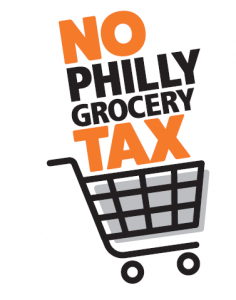
NAC Joins No Philly Grocery Tax Coalition
April 5, 2016
There is a grocery tax being discussed in the City of Philadelphia that would place a three cent per ounce tax on sodas and beverages. NAC has joined a coalition to stop this tax. This coalition is being formed by the American Beverage Association, also a member of Philadelphians Against the Grocery Tax.
NAC and the American Beverage Association are asking you to get involved. Visit NoPhillyGroceryTax.com and join the coalition. Sign the petition. Send an email to the city council and the mayor. Tell your friends and family about the impact of this proposed beverage tax – and ask them to sign up, too!
Here is a link to a document that provides more information.
_____________________________________________________________________________________________________________________________________________
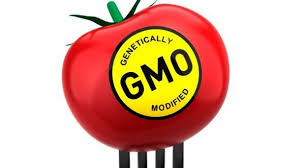
Senate Stalls Industry-Backed GMO Labeling Bill
March 11, 2016
The Senate blocked a bill Wednesday that would have set voluntary labeling standards for genetically modified foods but would also have barred states like Vermont from setting their own rules.
Republicans argued that companies will soon face a morass of competing label laws that will raise costs for firms and prices for consumers and frighten Americans unnecessarily.
Senate Majority Leader Mitch McConnell (R-Ky.) said the bill was “aimed at protecting middle-class families from unfair higher food prices” and argued that calls for labeling were based on unfounded fears of genetically engineered foods.
Source: Huffington Post
_______________________________________________________________________________________________________________________________________

FDA Delays Menu Labeling Enforcement
March 11, 2016
As a result of language in the omnibus appropriations bill enacted December 18, 2015 (Public Law 114-113 Consolidated Appropriations Act, 2016), FDA is delaying enforcement from December 1, 2016, to the date that is one year after it issues final, Level 1 guidance on menu labeling. The draft Level 1 guidance was issued on Sept. 11, 2015, and FDA is considering all comments received and will issue the final guidance as soon as possible.
FDA appreciates the extensive input received from stakeholders throughout the process of establishing requirements for menu labeling and in developing guidance. We will work flexibly and cooperatively with establishments covered by the menu labeling final rule to facilitate compliance and will provide educational and technical assistance for covered establishments and for our state, local, and tribal regulatory partners.
Source: NAC
____________________________________________________________________________________________________________________________________________
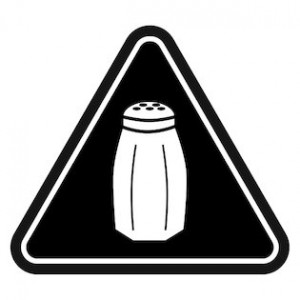
NYC Can Require Restaurant Chains to Display Sodium Warning
February 25, 2016
A little black and white salt shaker will start popping up on menus in New York City after a New York State Supreme Court judge upheld the city rule requiring chain restaurants to warn patrons if they’re eating a meal with excessive amounts of sodium, according to a statement by the New York City Health Department.
The rule was passed unanimously last fall by the New York City Board of Health, but was challenged in court by a preliminary injunction requested by the National Restaurant Association.
The ruling means that starting next week restaurants with more than 15 locations will have to use the so-called “sneaky salt” icon on menu items that contain 2,300 milligrams or more of sodium, which is the daily recommended limit.
Source: ABC News
___________________________________________________________________________________________________________________________________________

High-Salt Warnings on New York Menus
December 1, 2015
Starting Tuesday, diners at many chain restaurants in New York City will see warnings on menus next to items that are high in sodium, under a rule believed to be the first of its kind in the country.
The symbol of a saltshaker in a black triangle will warn customers about items that contain more than 2,300 milligrams of sodium, the recommended daily maximum. The city estimated that 10 percent of menu items will need the warning.
The rule is part of a measure, approved in September, that also requires the restaurants to post a clearly visible statement warning customers that high sodium intake can increase blood pressure and risk of heart disease and stroke.
Source: The New York Times
____________________________________________________________________________________________________________________________________________

FDA Statement on Release of Menu Labeling Guidance
September 14, 2015
By Dr. Susan Mayne, Director, Center for Food Safety and Applied Nutrition
The U.S. Food and Drug Administration (FDA) has issued a draft guidance document that will help companies to comply with the menu labeling final rule, which requires that calorie information be listed on menus and menu boards in chain restaurants and similar retail food establishments with 20 or more locations. In July, FDA extended the compliance date an additional year, beyond the original December 2015 compliance date, to help facilitate efficient compliance across all covered establishments. The guidance document issued today is an important resource in our efforts to assist those in covered establishments to comply with the rule by December 1, 2016. Ultimately, consumers will be able to make more informed choices for themselves and their families.
We appreciate the extensive input we have received from stakeholders throughout the process of establishing requirements for menu labeling in certain restaurants and other retail food establishments. The guidance document responds to many of the most frequently asked questions that the agency has received to date in emails and during meetings with and presentations to representatives of the range of establishments covered by the new menu labeling rule. These interactions have been invaluable.
This guidance is intended to help establishments implement the rule and better understand the flexibility in the rule. The guidance also answers questions and helps explain how the final requirements work for different types of establishments. The guidance does not and cannot change the final requirements of the menu labeling rule.
The guidance is being issued as a “draft” and we welcome your comments. We will consider all comments before finalizing the guidance and will consider updates to the guidance as needed. We are committed to working collaboratively with establishments covered by the menu labeling final rule, including chain restaurants, covered grocery stores serving restaurant-type food, and others, now and in the future, to answer additional questions. In addition, we will be providing educational and technical assistance for covered establishments and for our state, local, and tribal regulatory partners to support consistent compliance nationwide.
We encourage covered establishments to consider the information in this draft guidance as they prepare to comply with the final rule by December 2016. We will work flexibly and cooperatively with individual companies making a good faith effort to comply. We believe that this cooperative approach helps to improve the dialogue surrounding the requirements and facilitates successful implementation in a practical way.
As a result of these efforts, consumers will have ready access to calorie information they currently may not have to help them make healthy decisions. That’s a worthy outcome of which we can all be proud.
For more information:
• Draft Guidance for Industry: A Labeling Guide for Restaurants and Retail Establishments Selling Away-From-Home Foods – Part II (Menu Labeling Requirements in Accordance with 21 CFR 101.11)
• Menu and Vending Machines Labeling Requirements
• FDA Statement on Extension of Menu Labeling Compliance Date
_________________________________________________________________________________________________________________________________________

GMO Bill Passes in Vermont
September 8, 2015
A GMO bill has passed the Vermont House and Senate that will require all packaged goods to be labeled; however, there are a few exemptions listed regarding processed foods. The bill takes effect on July 1, 2016. HERE IS A LINK TO THE BILL. Please note the exemptions beginning on page 11. It appears that any unpackaged foods sold at theatres should be exempt from labeling per items #7a and b, on page 13. Also, HERE IS A LINK TO A PUBLIC PRESENTATION put together by the Vermont Attorney General’s Office that does a good job in explaining the key points of the law.
___________________________________________________________________________________________________________________________________________
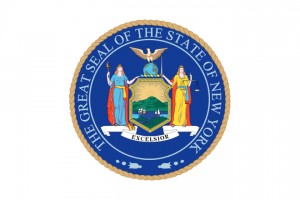
New York Introduces Sugar Warning Bill
September 3, 2015
A Bill has been introduced in the New York State Assembly that would require sugar-sweetened food items and beverages to be labeled with a safety warning.
Here is text from Bill Number A08359 and a link to the entire Bill:
TITLE OF BILL: Sugar-sweetened food item and beverage safety warning act.
An act to amend the agriculture and markets law, in relation to the labeling of sugar-sweetened food items and beverages with warnings
PURPOSE OR GENERAL IDEA OF BILL: Requires a safety warning label on certain sugar-sweetened food items, concentrates used to make sugar-sweetened food items, food item dispensing machines, and vending machines that dispense sugar-sweetened food items in order to increase public awareness regarding the health ailments associated with consumption of sugar-sweetened food items, especially obesity, diabetes and tooth decay.
CLICK HERE TO READ ENTIRE BILL
____________________________________________________________________________________________________________________________________________
Candy Taxes Across the USA
August 21, 2015
NAC has obtained a schedule and map of how sales taxes on candy are applied state-by-state across the nation.
This information is courtesy of the National Confectioners Association (NCA).
The sales taxes are broken down by states who treat candy as groceries, states who treat candy differently than groceries and states with no sales tax on candy at all. The schedule also defines how the states treat soda.
____________________________________________________________________________________________________________________________________________
FDA Extends Menu Label Compliance Date
July 9, 2015
Michael R. Taylor, FDA Deputy Commissioner for Foods and Veterinary Medicine issued this statement which extends the compliance deadline to December 1, 2016:
The U.S. Food and Drug Administration appreciates and takes very seriously the extensive input it has received from stakeholders throughout the process of establishing requirements for menu labeling in restaurants and other retail food establishments. The FDA is committed to working collaboratively with those establishments covered by the menu labeling final rule, including chain restaurants, covered grocery stores, and others to facilitate timely and efficient implementation of the new requirements.
Since the FDA issued the menu labeling final rule on December 1, 2014, the agency has had extensive dialogue with chain restaurants, covered grocery stores and other covered businesses, and answered numerous questions on how the rule can be implemented in specific situations. Industry, trade and other associations, including the grocery industry, have asked for an additional year to comply with the menu labeling final rule, beyond the original December 2015 compliance date. The FDA agrees additional time is necessary for the agency to provide further clarifying guidance to help facilitate efficient compliance across all covered businesses and for covered establishments to come into compliance with the final rule. The FDA is extending the compliance date for the menu labeling rule to December 1, 2016, for those covered by the rule.
To support compliance by this date, the FDA will continue to engage in discussions with the covered businesses and to answer questions about how the rule applies in particular situations. In addition, the FDA plans to issue in August 2015 a draft guidance document that provides answers to some of the more frequently asked and crosscutting questions that the agency has received to further assist covered establishments in complying with the rule. This guidance document will be labeled “draft” to reflect the FDA’s openness to further comments and dialogue and to expanding the guidance as new questions arise. The FDA encourages companies to consider the information in the August guidance as they prepare to comply by December 2016.
There will be an opportunity for comment on the draft guidance and the FDA will review any comments received as quickly as possible.
In addition to the guidance, the FDA will also provide educational and technical assistance for the covered businesses and for our state, local, and tribal regulatory partners to support reasonable and consistent compliance nationwide. Now and following the December 1, 2016 compliance date, the FDA will work flexibly and collaboratively with individual companies making a good faith effort to comply with the law.
Source: U.S. Food and Drug Administration
______________________________________________________________________________________________________________________________________________
California Senate Fails To Pass Soda Warning Label Bill
May 3, 2015
A California Senate committee on Wednesday failed to pass a bill that would have required soda companies to print warning labels about the sugar content in the drinks they sell. SB 203, introduced by Senate Majority Leader Bill Monning, D-Carmel, would have required all drinks with 75 calories or more per fluid ounce to carry a warning. CLICK HERE TO READ MORE
Source: International Business Times
________________________________________________________________________________________________________________________________________________
FDA Menu Labeling Presentation Available
April 28, 2015
On Wednesday, April 22, NAC and NATO presented: The How-To-Guide for Compliance With the FDA Menu Labeling Regulations. The session occurred from 3:30 PM – 4:45 PM at CinemaCon .
During the session, Dr. Claudine Kavanaugh of the U.S. Food and Drug Administration (FDA) discussed all aspects of the new regulations while providing real-world and practical solutions so that you may be able to comply effective December 1, 2015.
The FDA has approved the release of the presentation slides for your use:
CLICK HERE TO DOWNLOAD DR. KAVANAUGH’S PRESENTATION
_______________________________________________________________________________________________________________________________________________
NAC and NATO to Present FDA Menu Labeling Guide at CinemaCon
March 3, 2015
On Wednesday, April 22, NAC and NATO will present: The How-To-Guide for Compliance With the FDA Menu Labeling Regulations.
The session will take place from 3:30 PM – 4:45 PM at CinemaCon .
The US Food and Drug Administration (FDA) announced on December 1, 2014 that within one year all food service operations with 20 or more outlets must list calorie counts on all menus and menu boards. These new regulations also mandate that upon request food service operations must also provide complete nutritional analysis of all products served. These new regulations incorporate movie theatres with 20 or more facilities. This panel will feature Dr. Claudine Kavanaugh of the U.S. Food and Drug Administration (FDA) and will discuss all aspects of the new regulations while providing real-world and practical solutions so that you may be able to comply effective December 1, 2015.
Have questions regarding Menu Labeling? email: CalorieLabeling@fda.hhs.gov
Have questions regarding Vending machine labeling? email: CalorieLabelingVend@fda.hhs.gov
Claudine J. Kavanaugh, PhD, MPH, RD
Dr. Kavanaugh is an interdisciplinary scientist in the Office of Foods and Veterinary Medicine at the U.S. Food and Drug Administration. She has been with the FDA for eleven years and works on nutrition policy issues. Dr. Kavanaugh’s recent activities include restaurant menu and vending machine labeling, updating the nutrition facts label, and sodium reduction. Prior to joining the FDA, she was a cancer prevention fellow at the National Cancer Institute. Dr. Kavanaugh received her Ph.D. in nutrition from Purdue University and a Master’s in Public Health from Johns Hopkins University. She is also registered dietitian.
Moderator: Don Lear, Senior Customer Marketing Manager for Specialty & Foodservice The Hershey Company and Government Relations Committee Chair, National Association of Concessionaires (NAC)
Panel Members:
Dr. Claudine Kavanaugh – U.S. Food and Drug Administration (FDA)
Esther Baruh – Government Relations Manager – National Association of Theatre Owners (NATO)
Brad Derusseau – Chief Technology Officer – CinemaScene
Rodrick Glass – Executive Vice President Business Development –Allure Global
Joel M. Neuman, VP & Sr. Managing Counsel National Foodservice, Coca-Cola
__________________________________________________________________________________________________________________________________________________
Beverage Menu Labeling White Paper
March 3, 2015
NAC member Coca-Cola has recently shared a white paper that it is distributing to customers in regards to the FDA Mandates and the use of Menu Boards.
The purpose of this communication is to provide an overview of the new menu labeling regulations as they apply to beverages. It’s important to note that this is just a summary of the menu labeling regulations intended to assist you in thinking about how to address your menus and menu boards; it is not intended as legal advice, and you should always consult your own legal advisors with questions for your particular circumstances.
CLICK HERE TO READ MORE
___________________________________________________________________________________________________________________________________________________
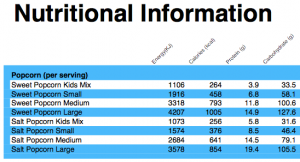
Menu Labeling – NAC Responds
January 9. 2015
This article recently appeared on Celluloid Junkie quoting NAC and discussing the new FDA Calorie and Menu Labeling Regulations.
Cinema Concessions Calorie Count Coming in 2015 – NAC Responds
Source: Celluloid Junkie
Mandatory calorie count display is coming to US cinemas in 2015 – but is the industry ready and what are trade bodies such as NAC doing in preparation?
CLICK HERE TO READ MORE
____________________________________________________________________________________________________________________________________________
Here are two stories from The New York Times and Washington Post concerning new FDA rules requiring the posting of calorie counts on menus. NAC will be following this issue closely.
CLICK HERE FOR FDA MENU LABELING FACT SHEET
CLICK HERE FOR 400 PAGE FDA FOOD LABELING DOCUMENT
F.D.A. to Require Calorie Count, Even for Popcorn at the Movies
Source: The New York Times
November 25, 2014
WASHINGTON — The Food and Drug Administration announced sweeping rules on Tuesday that will require chain restaurants, movie theaters and pizza parlors across the country to post calorie counts on their menus. Health experts said the new requirements would help combat the country’s obesity epidemic by showing Americans just how many calories lurk in their favorite foods.
The rules will have broad implications for public health. As much as a third of the calories that Americans consume come from outside the home, and many health experts believe that increasingly large portion sizes and unhealthy ingredients have been significant contributors to obesity in the United States.
CLICK HERE TO READ MORE
Calorie counts: Coming to a restaurant, movie theater, vending machine near you
Source: Washington Post
November 25, 2014
Chain restaurants, vending machines, grocery stores, coffee shops and pizza joints will soon have to display detailed calorie information on their menus under long-awaited rules to be issued Tuesday by the Food and Drug Administration.
The calorie-posting requirements extend to an array of foods that Americans consume in their daily lives: popcorn at the movie theater, muffins at a bakery, a deli sandwich, a milkshake at an ice cream shop, a drive-through cheeseburger, a hot dog at Costco or Target.
CLICK HERE TO READ MORE
__________________________________________________________________________________________________________________________________________
SNAP Comments Due October 20
October 16, 2014
Two industry associations have recently submitted comments to the EPA committee chair regarding a US EPA Proposed Regulation on Refrigerants and Insulation to Protect the Stratospheric Ozone. NAC Members and other interested parties are asked to do likewise.
Under this proposed rule, various hydro fluorocarbons and blends that were previously listed as acceptable alternatives to ozone-depleting substances (ODS) will be listed as unacceptable for some uses. This proposed rule is part of the SNAP (Significant New Alternatives Policy Program) authorized under the Clean Air Act, which the EPA continuously review alternatives to ODS to find substitutes that pose less overall risk to human health and the environment.
The significance to the Concession industry is although all current cooling and refrigerating units are grandfathered, all new or retrofitted equipment will need to meet the proposed EPA regulations. The cost of reconfiguring manufacturing for a January 1, 2016 deadline when the European Union has a deadline of January 1, 2022 will obviously be a burden on the ultimate end-user.
The SNAP Coalition encourages you to submit comments to this committee by the deadline of October 20th at midnight in preparation for upcoming hearings.
Here are comments from SNAP Coalition.
Here is a Sample Letter from NAFEM (North American Association of Food Equipment Manufacturers) based on specific information from their member manufacturers and can be used as a reference for impacts on end users that manufacturers anticipate will occur
Here is a Sample Letter from AHAM (Association of Home Appliance Manufacturers)
Comments may be submitted via email (a-and-r-docket@epa.gov) or regulations.gov at: http://www.regulations.gov/#!documentDetail;D=EPA-HQ-OAR-2014-0198-0001
___________________________________________________________________________________________________________________________________________
EPA Proposed Regulation on Refrigerants and Insulation
September 19, 2014
Source: National Association of Concessionaires (NAC)
(Chicago) Sept. 19, 2015 – NAFEM (National American Association of Food Equipment Manufacturers) coordinated a Conference Call on Wednesday, September 17th from their Washington DC offices with a myriad (10 or 11) of interested association public policy representatives to respond and inform regarding a US EPA Proposed Regulation on Refrigerants and Insulation to Protect the Stratospheric Ozone. Under this proposed rule, various hydro fluorocarbons and blends that were previously listed as acceptable alternatives to ozone-depleting substances (ODS) will be listed as unacceptable for some uses. This proposed rule is part of the SNAP (Significant New Alternatives Policy Program) authorized under the Clean Air Act, which the EPA continuously review alternatives to ODS to find substitutes that pose less overall risk to human health and the environment. As safer alternatives become available for particular applications, the list of acceptable substitutes is evaluated and revised.
CLICK HERE FOR POWERPOINT PRESENTATION FROM NAEFEM ON EPA SNAP ISSUE.
CLICK HERE FOR SNAP COALITION GRASSROOTS CONGRESSIONAL OUTREACH COMMENTS
The proposed changes will take into effect on January 1, 2016 and will impact:
· Aerosol propellants
· Motor vehicle air conditioning systems
· New and retrofit retail food refrigeration equipment (including condensing units) and new and retrofit vending machines
· All Foam blowing end users
The significance to the Concession industry is though all current cooling and refrigerating units are grandfathered, all new or retrofitted equipment will need to meet the proposed EPA regulations. The cost of reconfiguring manufacturing for a January 1, 2016 deadline when the European Union has a deadline of January 1, 2022 will obviously be a burden on the ultimate end-user. It is also feared that because the new refrigerants and coolants will be in short supply due to the rapid change-over that auto air conditioning will be the primary initial user limiting supply for all other equipment. It is also feared that end-users will extend the life of old equipment so that they won’t be impacted by the new regulations resulting in continued use of inefficient equipment and ultimately dirty ozone levels.
The interested association groups are currently requesting a delay in comments from the current October 6th deadline for at least 30 additional days so that an industry response can be coordinated. It is the goal of the group to request an extension of the proposed rule until 2022 as is the case with the EU.
The Association Group will meet on a weekly basis to coordinate efforts.
CLICK HERE TO GO TO NAC GOVERNMENT RELATIONS PAGE
______________________________________________________________________________________________________________________________________________
NAC Calls Suffolk County, NY Concessions Mandates Well Intended but Impractical
July 31, 2014
Source: National Association of Concessionaires (NAC)
(CHICAGO) July 31, 2014 -National Association of Concessionaires (NAC) though lauding the Suffolk County, New York Legislature on their well-intended approach to, “Adopt a leadership role in promoting good health and fighting obesity,” finds such an Orwellian mandate as Resolution #1096-2014 (a Local Law to establish healthy food standards at Suffolk County facilities) as, “Ill-conceived and destined for failure,” stated Daniel C. Borschke, FASAE, CAE, Executive Vice President of NAC.
HERE IS A STORY ABOUT THE RESOLUTION IN THE SUFFOLK TIMES
SEE THIS STORY AS PICKED UP BY FILM JOURNAL
The legislation, adopted on Tuesday, July 29, 2014 which exempts correctional facilities, a minor league baseball stadium, a museum and the community college mandates concessionaires shall offer four (4) daily fresh fruit or vegetable choices with a minimum of one daily leafy-green salad and one vinegar-based dressing; attempt to offer salads, sandwiches and entrees that have no more than 700 calories with 25% of offerings having 550 calories or less, containing no more than 800 mg of sodium and made of whole grains while also offering at least one steamed, baked or grilled vegetable option daily and half of all soup offerings shall contain no more than 480 mg of sodium per 8 oz. serving.
Though NAC does recognize the societal epidemic among children and adults in regards to obesity, cardiovascular diseases and diabetes it would be more effective if municipalities would partner with those who relate and service customers on a daily basis on their food choices rather than mandating, “From the mount,” edicts which have proven in the past inequitable and poorly conceived as was the case in New York City and their soda cup effort.
“Choice and meeting customer needs and desires are the backbone of the US marketplace and it has been proven time and time again that industry will provide their customers what they demand. The landscape is splattered with failed enterprises that attempted to force their food and beverage desires on a less than responsive customer-base,” Borschke continues.
“NAC would welcome the opportunity to work with Suffolk County to tackle mutual dietary issues during their implementation and enforcement of the new law, cognizant of the fact that mandates can sometimes produce unanticipated results such as less interest in concession contracts, unemployed food service workers, food waste and budget deficits due to a lack of participation in county food offerings,” Borschke concluded.
Founded in 1944, NAC represents the operators and food, beverage and service suppliers in the recreation and entertainment concession industry. As a 501 C6 not for profit trade association, NAC provides advocacy, education and research for its world-wide membership.
__________________________________________________________________________________________________________________________________________________
City Loses Final Appeal on Limiting Sales of Large Sodas
June 26, 2014
Source: The New York Times
The Bloomberg big-soda ban is officially dead.
The state’s highest court on Thursday refused to reinstate New York City’s controversial limits on sales of jumbo sugary drinks, exhausting the city’s final appeal and handing a major victory to the American soft-drink industry, which bitterly opposed the plan. CLICK HERE TO READ MORE
_______________________________________________________________________________________________________________________________________________
State’s top court eyes Board of Health’s goal to ban large sugary drinks
June 5, 2014
Source: New York Post
ALBANY — Lawyers for New York City argued before the state’s highest Court Wednesday that the Board of Health has sweeping powers allowing it to restrict the size of sugary drinks — leading a judge to question if it might also get around to outlawing Big Macs and M&M’s.
In a closely watched case with national implications, city lawyers sought to overturn lower-court rulings that the health panel had exceeded its authority in 2012 when it limited the size of sweetened beverages in restaurants to 16 ounces. CLICK HERE TO READ MORE
___________________________________________________________________________________________________________________________________________________
Seattle raises minimum wage to $15 an hour, highest in U.S.
June 2, 2014
Source: Los Angeles Times
This progressive and expensive city struck a blow against rising income inequality Monday when the City Council voted unanimously to raise the minimum wage to $15 an hour, the highest municipal minimum of any metropolis in the country and the rallying cry of fast-food workers and union organizers nationwide..
With the council chambers standing room only and supporters waving signs declaring “Seattle needs a raise” and “$15 good work Seattle,” council members approved the new ordinance, which will go into effect on April 1, 2015, and be phased in over the next three to seven years depending on the size of the business. CLICK HERE TO READ MORE
___________________________________________________________________________________________________________________________________________________
Vermont lawmakers send GMO food-labeling law to governor
April 23, 2014
Source: Reuters
A law that would make Vermont the first U.S. state to enact mandatory labeling of foods made with genetically modified organisms, or GMOs, received final approval from state lawmakers on Wednesday and now heads to the governor’s desk.
The Vermont House of Representative passed the bill 114-30. Last week, the Vermont Senate, by a vote of 28-2, approved the measure, which requires foods containing GMOs sold at retail outlets to be labeled as having been produced or partially produced with “genetic engineering.” CLICK HERE TO READ MORE
____________________________________________________________________________________________________________________________________________________
NLRB to Consider Proposed Rule on Union
April 4, 2014
Source: NAMA
The National Automatic Merchandising Association (NAMA) is asking its members and members of other trade groups such as NAC to contact their lawmakers regarding this important issue.
The National Labor Relations Board (NLRB or “Board”) has recently proposed an expansive rule to change the Board’s procedures for union election campaigns in the workplace. The rule was first proposed in 2011, but was halted from implementation due to a court ruling that determined that the Board used improper procedures to adopt it.
The Board received 65,958 written comments from organizations and employers expressing concern about the effect of the 2011 rule, and yet despite this significant response, the current proposed rule is essentially the same as the version introduced in 2011. More specifically, the proposed rule contains a number of detrimental provisions. CLICK HERE TO READ MORE
_____________________________________________________________________________________________________________________________________________________
NATO Urges Redefinition of 40 Hour Work Week Under ACA
April 1, 2014
Source: NATO
The National Association of Theatre Owners (NATO) is asking its members and members of other trade groups such as NAC to contact their lawmakers regarding this important issue.
The letter to lawmakers found at the hyperlink can be edited, and NATO encourages you to do so. To send, simply enter your zip code to identify your Member of Congress, provide your contact information, and click the “Send Message” button. The letter is already customized to reflect whether your lawmaker is a current cosponsor of H.R. 2575. CLICK HERE TO READ MORE
__________________________________________________________________________________________________________________________________________________________
California Lawmaker Proposes Warning Labels to Sodas
February 13, 2014
Source: L.A. Times
Citing studies linking soda to obesity, a state lawmaker and medical experts proposed a first-in-the-nation bill Thursday that sugary drinks sold in California carry health warning labels similar to those on cigarette packs. They want warning labels on the fronts of all cans and bottles of soda and juice drinks that have sugar added and 75 or more calories per 12 ounces. CLICK HERE TO READ MORE
_______________________________________________________________________________________________________________________________________________________
Under New Food Safety Law, Bartenders Have to Wear Gloves
January 14, 2014
Source: L.A. Times
Chefs aren’t the only ones affected by a new food safety law that bans culinary workers from touching certain foods with their bare hands. Like chefs, bartenders have to wear gloves or use other utensils to make their drinks. No touching ice, fruit garnishes or anything else that goes directly into your glass.
Changes to the California Retail Food Code that went into effect at the beginning of 2014 require disposable gloves or utensils such as tongs, paper or scoops to be used when handling “ready-to-eat” foods, which include sushi, bread, deli meats and fresh fruit and vegetables. Basically, nothing that won’t be cooked or reheated before it goes out to diners can be touched with bare hands.
CLICK HERE TO READ MORE.
_______________________________________________________________________________________________________________________________________________________
Malloy Serves Up Historic GMO Labeling Law
December 11, 2013
Source: Danbury Daily Voice
FAIRFIELD, Conn. – Fairfield restaurant Catch A Healthy Habit hosted Gov. Dannel Malloy and local lawmakers Wednesday afternoon for the official signing of a historic state law that requires food products to be labeled if they contain genetically modified organisms, or GMOs. Four other states must enact similar GMO laws before the labeling can begin. The combined population of the five states must number at least 20 million people and include Maine, New Hampshire, Vermont, Massachusetts, Rhode Island, New York, Pennsylvania or New Jersey. CLICK HERE TO READ MORE
_________________________________________________________________________________________________________________________________________________________
Food industry presses for voluntary GMO labeling standards
November 27, 2013
Source: The Hill
Crucial players in the American food industry are pressing for legislation that would institute a national voluntary labeling system for products that contain genetically engineered ingredients, according to documents obtained by The Hill. The effort follows expensive battles in California and Washington over state ballot initiatives seeking to impose mandatory labeling regulations for foodstuffs containing genetically modified organisms (GMOs). CLICK HERE TO READ MORE
____________________________________________________________________________________________________________________________________________________________
FDA Chief Says Menu Labeling Regulations Coming Soon
November 8, 2013
Source: Convenience Store News
WASHINGTON, D.C. — New regulations regarding menu labeling and calorie information are expected to be released soon, but writing the rules has proved more complicated than expected, according to a report by The Hill.
At a Nov. 5 event sponsored by Bloomberg Government, Food and Drug Administration (FDA) Commissioner Margaret Hamburg said she originally anticipated that the process of issuing the regulations, which are mandated by the 2010 Patient Protection and Affordable Care Act, “[would] be one of the most straightforward tasks. Little did I know how complicated it would be.” CLICK HERE TO READ MORE
___________________________________________________________________________________________________________________________________________________________
Tax on Soda to be Floated in San Francisco
October 28, 2013
Source: San Francisco Chronicle
Now it’s time for San Francisco to take its turn in the sugary beverage battle. Supervisor Scott Wiener plans this week to introduce a ballot measure that would set a tax on sugary beverages. The proceeds would fund health, nutrition and activity programs for city youth. Wiener’s proposal would levy a tax of 24 cents on each can of soda sold in the city, where fast-food restaurants are already prohibited from handing out free toys in kids’ meals high in fat, salt and sugar. CLICK HERE TO READ MORE
__________________________________________________________________________________________________________________________________________________________
New York Soda Ban to Go Before State’s Top Court
October 22, 2013
Source: The New York Times
The battle over big sodas is not yet finished. Mayor Michael R. Bloomberg’s ballyhooed and much-criticized attempt to limit the size of sugary drinks in New York City is set to be reviewed by the state’s highest court, the Court of Appeals, the city announced on Thursday, offering a final chance to salvage a plan that has twice been rejected by judges as improper. But the fate of the proposal now lies squarely in the hands of Mr. Bloomberg’s successor. The Court of Appeals is not planning to take up the case until next year, after Mr. Bloomberg is out of office, leaving the decision to pursue the case up to the next mayor. CLICK HERE TO READ MORE
_________________________________________________________________________________________________________________________________________________________
Mexico Takes Bloomberg-Like Swing at Soaring Obesity
October 16, 2013
Source: New York Times
In a bet against an epidemic of obesity and diabetes, President Enrique Peña Nieto has proposed a tax on sales of all sugary drinks. If it goes through, the tax will make Mexico a rare test case of a national soda tax directed at a severe obesity problem. The proposal has set off heated arguments in Mexico, but in the middle of the debate is an anti-obesity crusader from New York, Mayor Michael R. Bloomberg. Beyond his push to limit the sale of large sugary drinks in his own city, Mr. Bloomberg’s foundation is helping to finance the drive to curb them in Mexico as well. CLICK HERE TO READ MORE
_________________________________________________________________________________________________________________________________________________________
ACA Notice – No Penalty for Noncompliance with Notice Requirement
September 16, 2013
Source: NAC
The following is a link to an FAQ on the U.S. Department of Labor (“DOL”) website that confirms no penalty will be imposed for failing to comply with a notice requirement under the Affordable Care Act, which requires an employer to notify its employees on or before October 1, 2013, (i) about the Health Exchange, and (ii) as to whether the employer will offer health-care coverage to its employees. This notice requirement was discussed by Russell Hollrath, Esq. of Hollrath LLC during the Government Relations Panel at the 2013 NAC Conference & Trade Show in New Orleans. CLICK HERE TO READ MORE
_________________________________________________________________________________________________________________________________________________________
Category: Feature

